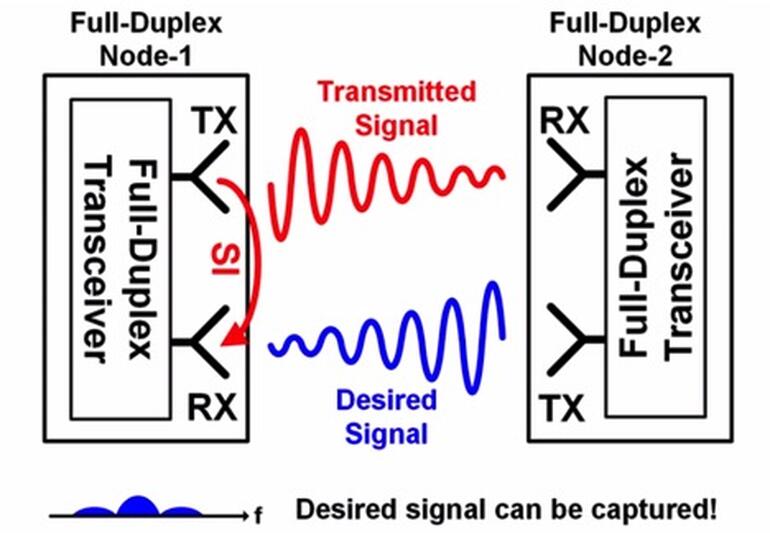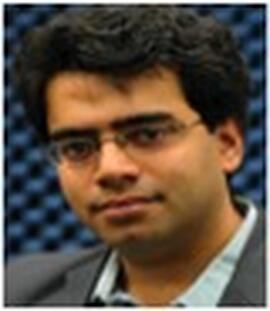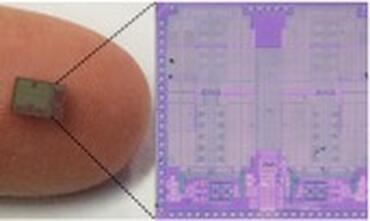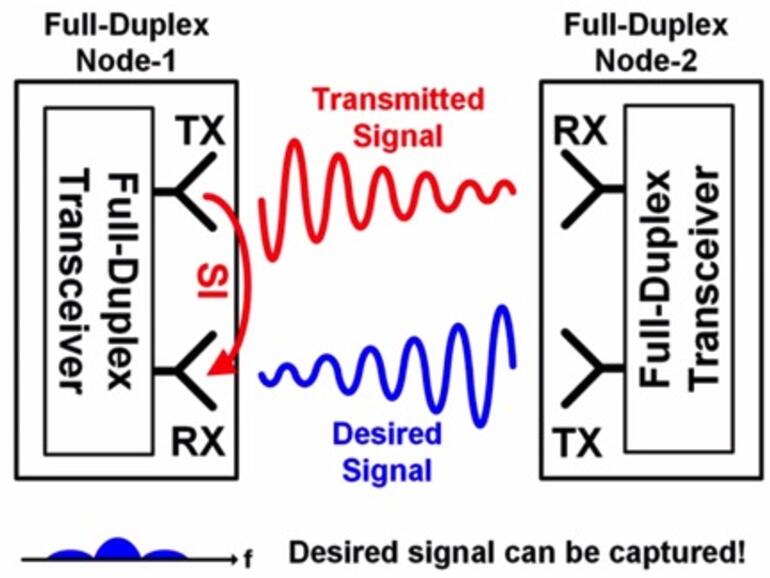Researchers at Columbia University have figured out how to get radios to receive and transmit simultaneously on the same frequency, plus shoehorning the tech into a tiny Integrated Circuit.

Image courtesy of Columbia University and Prof. Harish Krishnaswamy
Researchers have done what was thought to be impossible: create Integrated Circuits (IC) that facilitate full-duplex radio communications. “Transmitters and receivers either work at different times or at the same time but at different frequencies,” mentions the press release from Columbia University. “The Columbia team, led by Electrical Engineering Associate Professor Harish Krishnaswamy, is the first to demonstrate an IC that can accomplish this.”

Harish Krishnaswamy
Image courtesy of Columbia and Prof. Krishnaswamy
An obvious contradiction to the above statement is mobile phones; they are wireless and allow simultaneous communication — or do they? Officially no. Mobile phones and other communication devices that operate similarly use a technology called full-duplex emulation.
To help understand, it’s best to define a few terms:
- Half duplex: A system where two parties can communicate with each other, just not simultaneously — for example, a two-way radio.
- Full duplex: A system where two parties or devices can communicate with each other simultaneously — a landline telephone for instance.
- Full-duplex emulation: A process that approximates full-duplex communications over a half-duplex communications link.
There are two commonly used types of full-duplex emulation:
- Time-division duplexing (TDD): The transmitter and receiver both use the same frequency but transmit and receive traffic is time-synchronized.
- Frequency-division duplexing (FDD): The transmit and receive frequencies are separated by a defined-frequency offset, thus avoiding interference.
The importance of full-duplex
Unless saying “over” after talking is preferred, the importance of full-duplex for verbal communications is obvious. However, it might not be that evident when it comes to digital communications. Wireless (half duplex), by its nature (Radio- Frequency transmissions), cannot match the throughput — usually less than half — of a wired (full-duplex) connection, which is not a good thing in today’s bandwidth-hungry world.
Full-duplex emulation somewhat improves throughput, but other issues come into play. TDD has latency and performance challenges, while FDD requires common knowledge between connection points and more spectrum from an already over-crowded frequency band.
The problem
During a phone conversation, Krishnaswamy explained the problem. Most radio transceivers (other than those using FDD) either receive or transmit, but never at the same time — transmitting when trying to receive a signal on the same frequency would completely overwhelm the receiver with what the professor called self-interference.
So, the best of all worlds would be to somehow “cancel” the local transmitter’s signal in the local receiver circuitry; then, the remote signal can be heard, allowing full-duplex operation and maximum throughput. Krishnaswamy adds, “The transmitter self interference or echo, while somewhat known, is still quite uncertain because it can reflect off nearby objects and return to the local receiver.”
The solution

Image courtesy of Columbia and Prof. Krishnaswamy
To effectively eliminate self interference requires two automated operations:
- Sense the echo or self-interference as it appears at the receiver.
- Use an integrated filter bank to adjust the cancellation signal so that it exactly “sounds like” the echo and cancels it out to a high degree of accuracy.
Krishnaswamy added, “The best way to think about the filtering system is to liken it to graphic equalizers for stereos.”
If that’s not complicated enough, Krishnaswamy, along with research assistant and IC designer Jin Zhou, figured out how to put all that plus a receiver on an IC like the one shown to the right.
Why on an IC?
With RF engineers for friends, I understand the complexity of designing radio circuits using discrete components and PC boards. Yet, if there is a mistake, it’s just a matter of replacing components. However, Krishnaswamy and Zhou do not have that luxury. Krishnaswamy explains the fabrication process:
“There are commercial foundries (TSMC, Global Foundries etc.) that will fabricate custom ICs, but you have to do the design very carefully and give them what’s called the layout of the IC. There is only one shot for success. If you make a mistake, you have to go back to the drawing board, correct the design or layout, and re-send it for fabrication. The process takes months, and if you make a mistake, you can end up setting yourself back by around half a year.”
I asked Krishnaswamy how many designs it took until they had a working IC design. “One try,” he replied. “We’re part of a university system, and that means limited budgets, so we have to get it right the first time.”
My next question was why on an IC? “Wireless full duplex has been demonstrated before using discrete components,” explained Krishnaswamy. “However, these demonstrations and radios often use self-interference cancellation techniques that are not amenable to integration on an IC. Our main contribution was to devise techniques to achieve highly-accurate and broadband echo cancellation on an IC.”
From watching the videos on the Columbia high-Speed and Mm-wave IC Lab website, it seems the researchers got it right the first time.


